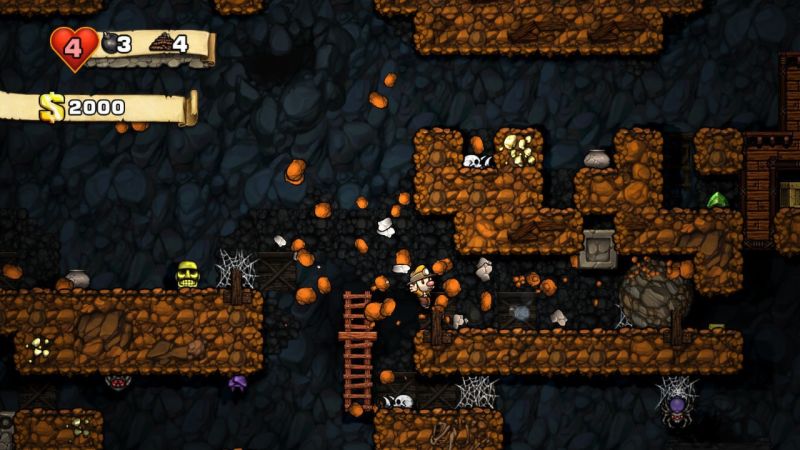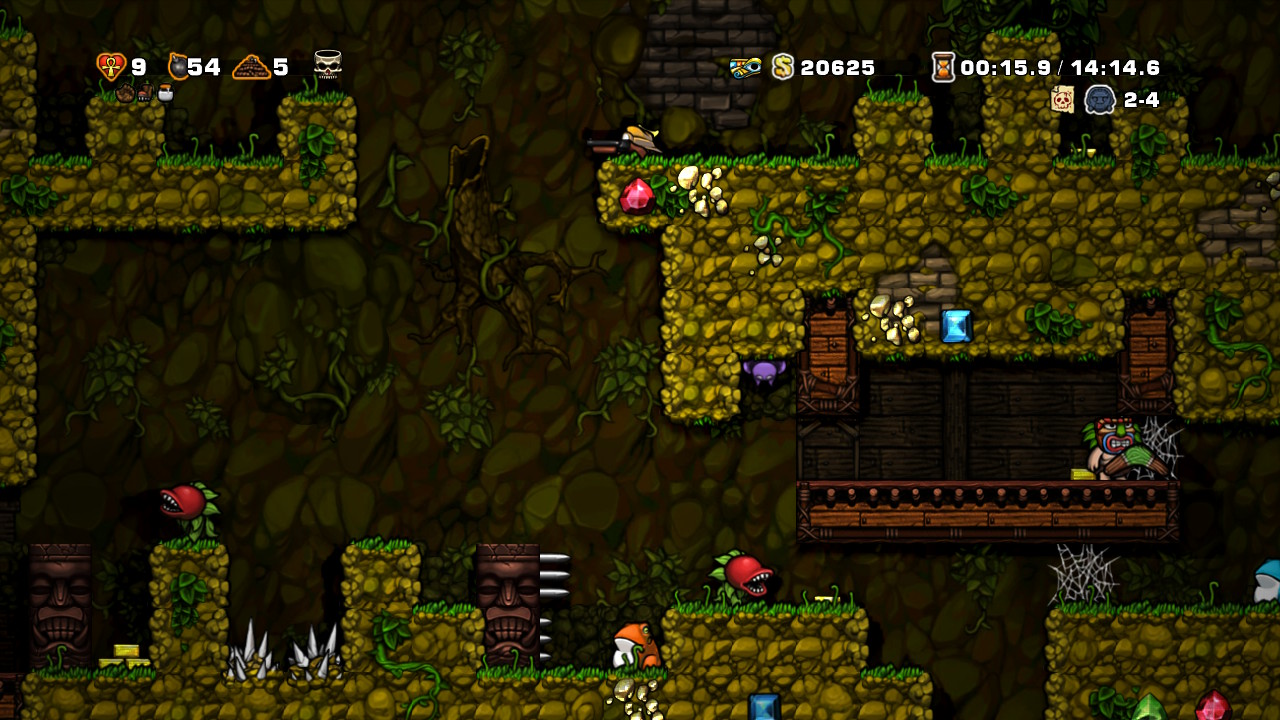9/24/2021
Review of Spelunky
Developed by: Mossmouth
2012, Xbox 360

I first played Spelunky when it was released on the Nintendo Switch in August 2021, and I assumed I wouldn't like it. I haven't liked most roguelike-likes, meaning games that were somehow inspired by Rogue (8) but not turn-based. I knew that these could have been called spelunkylikes instead, because Spelunky popularized combining action with roguelike elements, so I was ready to have the same issues with Spelunky as I have with all the others, but actually Spelunky is miraculously better than the games that succeeded it.
I've always felt that most roguelike-like games shouldn't have randomized levels or "permadeath". Those things only make them more difficult and I'm not sure what they add. I understand that it keeps you from memorizing each level, so you have to learn the entire system of a game, but it also makes you devote the time to mastering a game before you can even finish it. Would Shinobi III: Return of the Ninja Master (8) be better if you only had one credit and the layouts of the levels were randomized? It would play the same way but it would be annoyingly difficult, and the level designs would be less specific. Randomization and having one life per run seem to be the only parts these games take from roguelikes, but they mostly ignore the thing I like most about them, which is interactivity.
Everything in Spelunky is physically represented and can interact with each other. Roguelikes have a physical and interactive aspect to them too. A potion can be drunk by the player or thrown at an enemy to have an effect, if you drop an item or weapon it will still exist on the ground where you left it, shopkeepers have health like every other character and can be affected in the same way by items or spells as everything else. I was surprised when I saw you can bomb through any part of the level in Spelunky, or how you can pick up any object or enemy and use them like an item, because it reminded me of the physical feeling of roguelikes. Spelunky does it even better because there are no menus, so everything is interacted with on the screen. You "equip" an item by picking it up and holding it for example.
Randomized levels work in Spelunky partly because things can interact with each other. The game throws the enemies, the player, and the level together and the way it plays out can be surprising. I think I saw the term "GIF factory" used once in reference to The Legend of Zelda: Breath of the Wild (9), and the same thing applies to Spelunky, how a bomb can set off a chain reaction of a rock flying and hitting the player which causes them to land in a trap or a group of enemies, and either die comically or barely make it out alive. It's fun to see how the different elements get mixed together in a way that's unique to each playthrough.

Another reason the randomized levels work is that Spelunky is part strategy game. Unusual to most roguelike-likes, there's strategy with resource management. You need to decide if going out of your way to get money or an item is worth your resources of bombs, ropes, or how much time is left in the level. You also need to weigh how dangerous a situation is versus the reward, or if you should use a bomb or rope to get around part of the level that you don't want to deal with. The randomized levels matter because the layout causes you to make more than just action-related decisions.
Randomization makes more of an impact on a strategy game than an action game. If a single-screen strategy game, like chess (7), was randomized, where you decided to move next would be completely different. If a single-screen action game, like Robotron: 2084 (8), was randomized, your next few moves might be different, but eventually it would feel like you were playing the same level. Most roguelike-likes I've played use random levels to change the setup of each action-based challenge, but each version of the level ends up feeling the same because you aren't really making decisions based on the layout. You just go from one action segment to another without anything to make them feel distinct.
Spelunky feels like a strategy game also because it's turn-based, in a way, how the levels are segmented into static sections. For example, before you drop down into an area, you make a plan about how to deal with the enemies below you. The game usually gives you a safe place to think it through, and then carrying it out doesn't take much longer than that, since the enemies don't have a lot of health. Planning it is almost as important as doing it, and so there's the right balance between strategy and action in each situation.
I mentioned that randomization and "permadeath" are the most common things taken from roguelikes, and maybe this is a dumb opinion, but I don't think Spelunky should have one life per run either. If you had three continues, it wouldn't break the game. There's already an item that revives you to the start of the level once, and it's no problem. The only thing I don't like about Spelunky is when I die because I missed one jump out of a thousand, instead of dying because I made overall bad decisions.